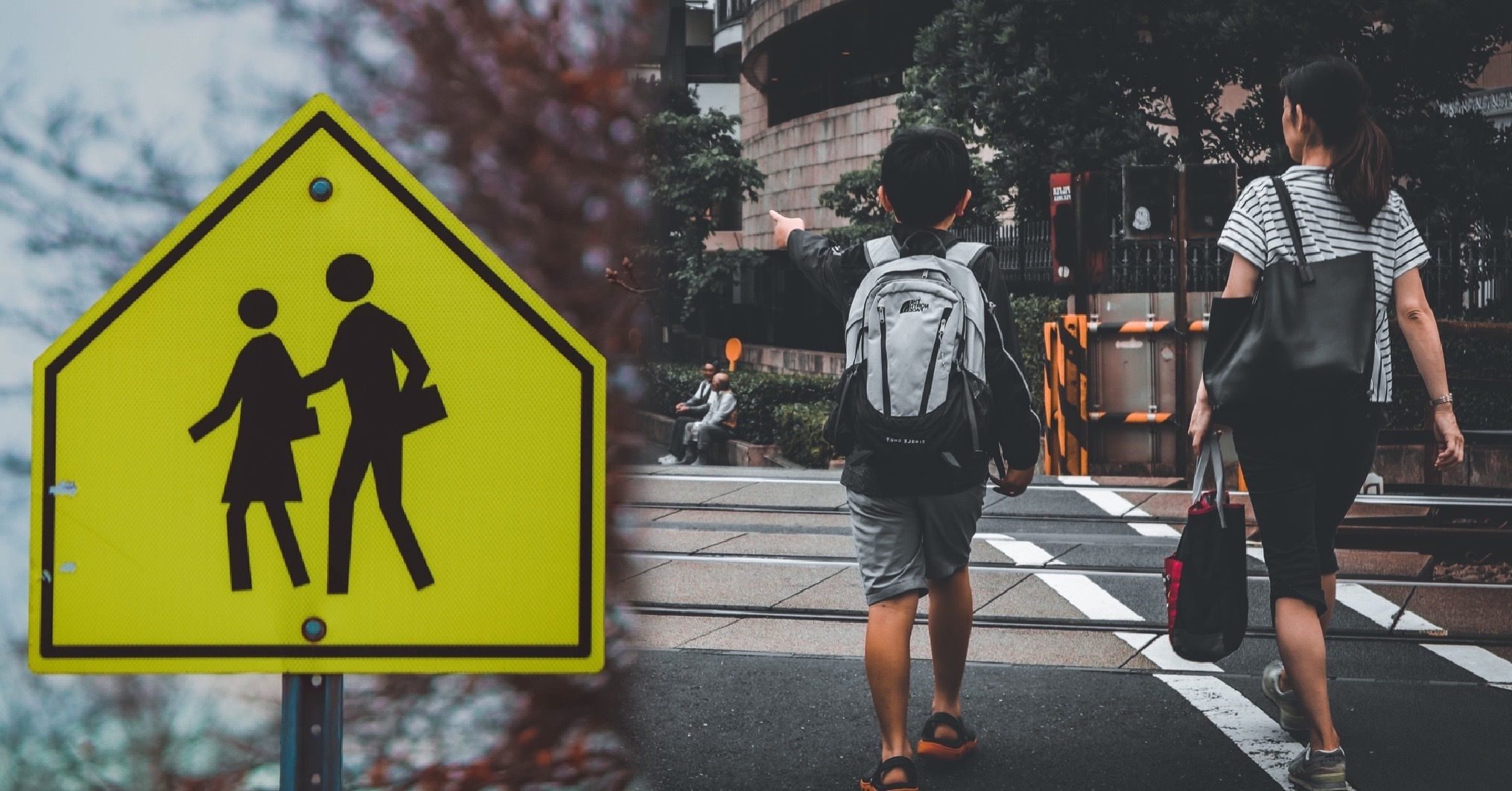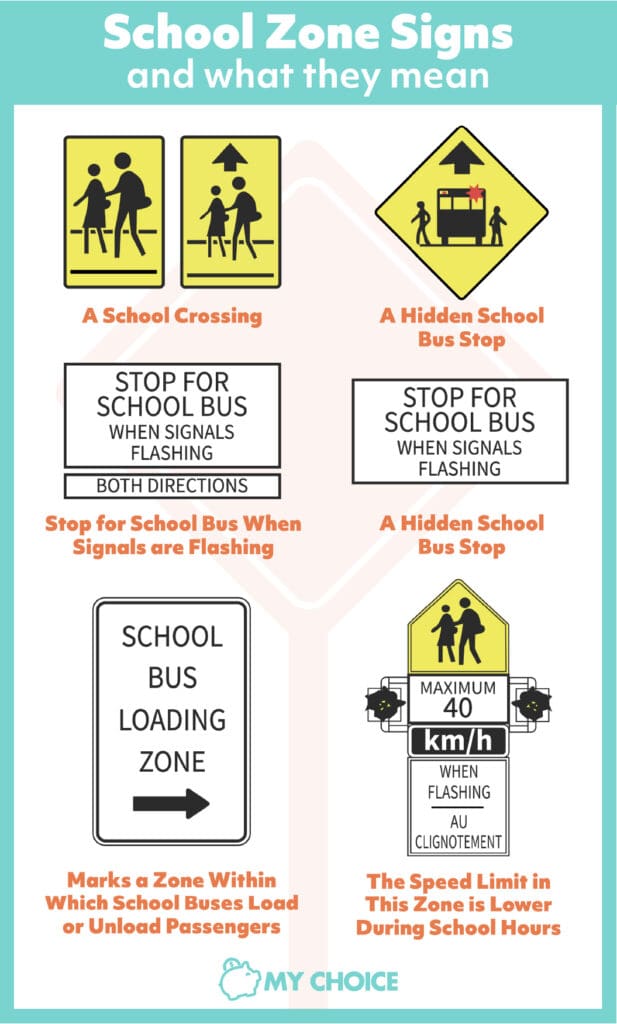
We all love speed on the road, especially if we have a fast car. However, when we enter neighbourhoods it is very common to find street intersections where a school crossing guard will give us the common sign of “Not so fast, my friend”.
School zones, especially in Ontario, tend to be very safe due to the strict driving laws near schools and the quite expensive fines for those who break the rules. Of course, we all want school zones in Ontario to stay safe for the sake of our children and teachers.
In the following article we’ll expand on: what are the signs to identify a school zone, the speed limits you must obey, the possible tickets you can get and how much they can cost you, and how these tickets can affect your car insurance rates and some advice on how to avoid unnecessary school zone fines on your driving record. Let’s begin!
What Exactly Is a School Zone in Ontario?
A school zone is usually a designated area that starts at the front door of the school, encompasses many blocks that surround the campus and has a high concentration of school-generated traffic.
The easiest way to recognize you are entering a school zone in Ontario is by watching for a regulatory traffic sign, yes the pentagonal fluorescent yellow sign featuring two pedestrians crossing.
Once you see this sign on the road you immediately must slow down and adjust your speed between 30 to 40 km/hr max. unless the sign indicates another speed limit.
This Is What School Zone Signs Look Like
These signs indicate that you are entering a school zone.
What Is the Speed Limit in a School Zone in Ontario?
As mentioned before, the speed limit in a school area is between 30 and 40 Km/hr.
The hours when you should be more cautious are between 8 am and 5 pm from Monday to Friday. Keep in mind that these limits take effect during the school year from September to June.
However, this does not mean that in August you can pretend that there are no speed limits or that children do not leave their homes. Watch always for the electronic speed limit sign to moderate your speed.
What Are the Main Rules When Driving in a School Zone?
School zone awareness
So far, we have mentioned several ways to recognize that you are entering a school area. Traffic school zone signs, crossing guards, school buses, school playgrounds, electrical speed signs, and also something that may be obvious but is worth mentioning are the large groups of young students walking towards the school building.
Bear in mind that It is illegal to pass any type of vehicle while driving in a school zone, school buses are the most important, and tickets fined in this zone can affect your car insurance rates considerably.
Speed limit
Speed limits in a school zone are considerably low compared to other streets or roads in Ontario cities like Toronto. Therefore speed signs should be an easy hint that you are entering a school zone and instead of pressing the throttle you should press the brake more often. Remember that 30 to 40 is the speed range you must keep driving.
Yield to pedestrians
Fines are painful for your pocket, but it can be more painful to hurt a person or child. Keep in mind that you should always yield to any pedestrian, whether an adult or child, especially in this area because there are large groups of children getting off or on the school bus, crossing intersections or exiting other cars. Stay 100% alert for possible pedestrians that may appear out of nowhere.
Yield to school buses
As a driver, you should never pass a stopped school bus with flashing lights. It is very dangerous and you may receive penalties up to $2000 and get 6 demerits on your license which will hurt your wallet and your car insurance rate.
Obey school crossing guards
Most school zones have crossing guards at crosswalks. All drivers in Ontario are required to follow a crossing guard’s instructions to stop or continue. When a guard displays a stop sign, you must remain stopped until all pedestrians, including the guard, are safely off the road.
How Much Are Fines for Speeding in a School Zone?
Speeding tickets in a school area may vary depending on how fast you were speeding. These amounts are how much fines for speeding can cost you:
| Driving Speed | Ticket Cost + Demerit Points |
|---|---|
| over 10 Km/hr | $95 |
| over 20 Km/hr | $180 + 3 demerit points |
| over 30 Km/hr | $450 + 4 demerit points |
| over 40 Km/hr | $595 + 4 demerit points |
If you are fined several times for speeding you can also be fined for careless driving.
How Do School Zone Tickets Affect My Car Insurance?
The mere fact that you accumulate demerit points will probably affect the cost of your auto insurance. Careless driving and speeding tickets can increase your premiums by 20%, and some car insurance companies will consider taking benefits or discounts away from you. The duration of these rates depends on your insurance company but is usually between 3 to 5 years.
How to Drive Safely in a School Zone
- The first and most important piece of advice is to drive slowly and obey the indicated speed limit.
- Crossing guards are there for a reason, to help make these areas safer for children, obey what the guard tells you and stop at each crosswalk.
- If you just moved into a new house or you’re a young driver, start getting better acquainted with the school zones in your neighbourhood. Check nearby intersections and where the school playground and parking lot are. Getting to know your neighbourhood better can help you prevent collisions.
- Drive as if there were children and pedestrians everywhere, that is with great caution and at the right speed.








